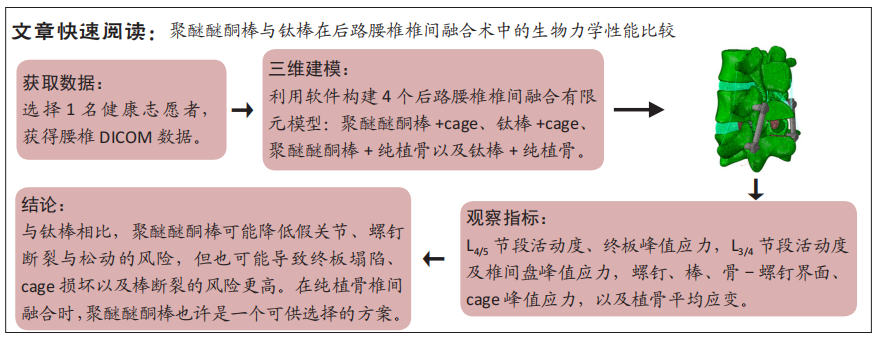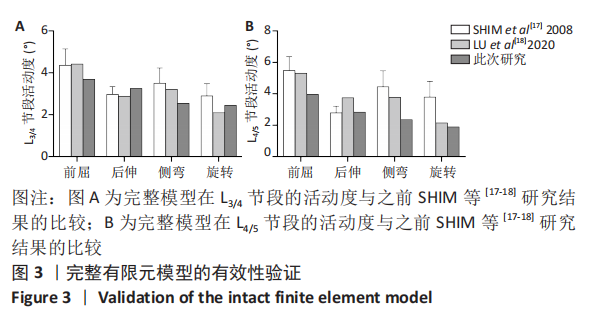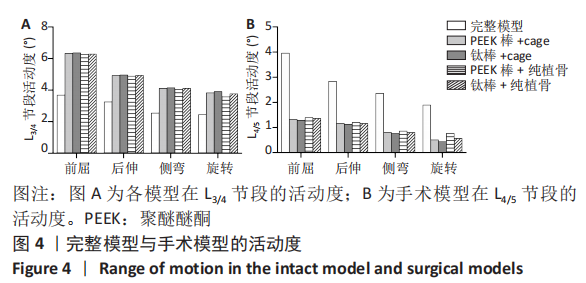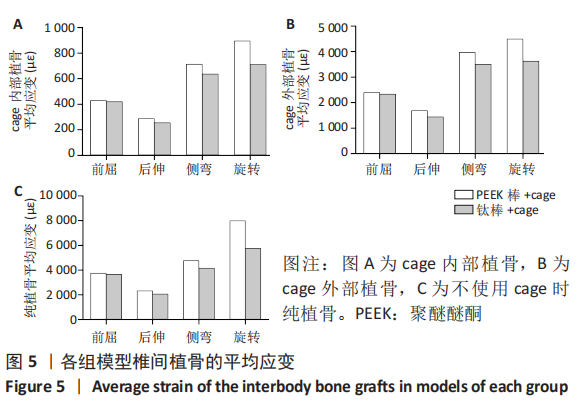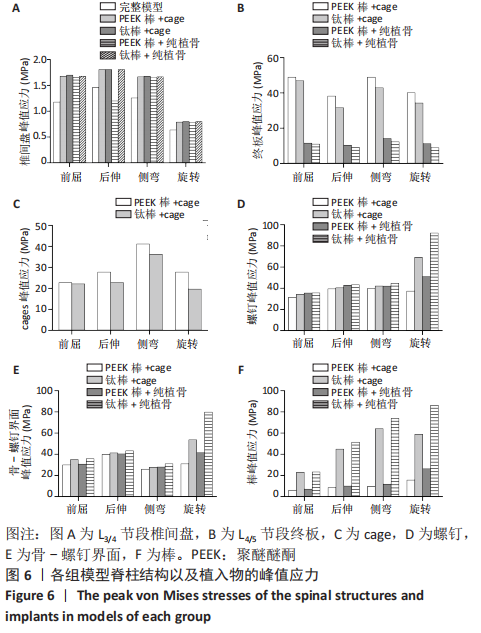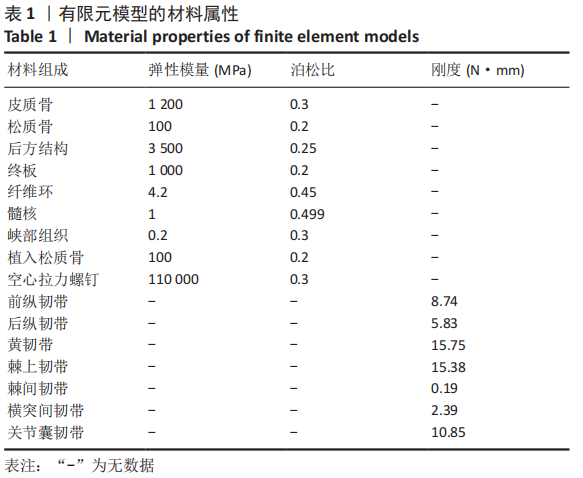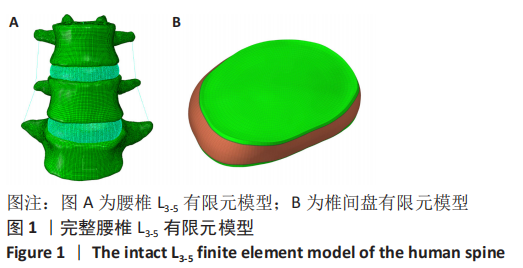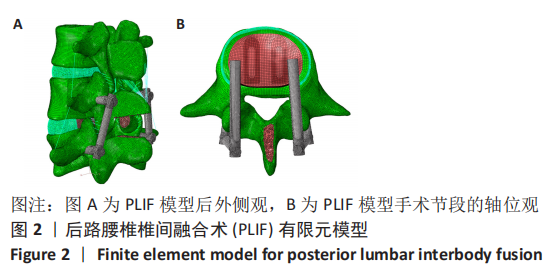[1] REID PC, MORR S, KAISER MG. State of the union: a review of lumbar fusion indications and techniques for degenerative spine disease. J Neurosurg Spine. 2019;31(1):1-14.
[2] OGRENCI A, KOBAN O, YAMAN O, et al. Polyetheretherketone Rods in Lumbar Spine Degenerative Disease: Mid-term Results in a Patient Series Involving Radiological and Clinical Assessment. Turk Neurosurg. 2019;29(3): 392-399.
[3] MAVROGENIS AF, VOTTIS C, TRIANTAFYLLOPOULOS G, et al. PEEK rod systems for the spine. Eur J Orthop Surg Traumatol. 2014;24 Suppl 1:S111-116.
[4] DE IURE F, BOSCO G, CAPPUCCIO M, et al. Posterior lumbar fusion by peek rods in degenerative spine: preliminary report on 30 cases. Eur Spine J. 2012;21 Suppl 1:S50-54.
[5] HIRT D, PRENTICE HA, HARRIS JE, et al. Do PEEK Rods for Posterior Instrumented Fusion in the Lumbar Spine Reduce the Risk of Adjacent Segment Disease? Int J Spine Surg. 2021;15(2):251-258.
[6] LI C, LIU L, SHI JY, et al. Clinical and biomechanical researches of polyetheretherketone (PEEK) rods for semi-rigid lumbar fusion: a systematic review. Neurosurg Rev. 2018;41(2):375-389.
[7] PONNAPPAN RK, SERHAN H, ZARDA B, et al. Biomechanical evaluation and comparison of polyetheretherketone rod system to traditional titanium rod fixation. Spine J. 2009;9(3):263-267.
[8] ROSS DA, ROSS MN. Lumbar Fusion With Polyetheretherketone Rods Use for Patients With Degenerative Disease. Fed Pract. 2021;38(Suppl 1):S9-S16.
[9] WU J, SHI L, LIU D, et al. Evaluating Screw Stability After Pedicle Screw Fixation With PEEK Rods. Global Spine J. 2021:2192568221996692.
[10] GORNET MF, CHAN FW, COLEMAN JC, et al. Biomechanical assessment of a PEEK rod system for semi-rigid fixation of lumbar fusion constructs. J Biomech Eng. 2011;133(8):081009.
[11] RANA M, BISWAS JK, ROY S, et al. Motion analysis of lumbar vertebrae for different rod materials and flexible rod device – An experimental and finite element study. Biocybernetics and Biomedical Engineering. 2020;40(1): 415-425.
[12] HSIEH YY, TSUANG FY, KUO YJ, et al. Biomechanical analysis of single-level interbody fusion with different internal fixation rod materials: a finite element analysis. BMC Musculoskelet Disord. 2020;21(1):100.
[13] MESBAH M, BARKAOUI A. Is Pedicle-Based Hybrid Stabilization (PBHS) protecting posterior lumbar fixation from adjacent-segment failure? Finite element analysis and comparison of different systems. Orthop Traumatol Surg Res. 2021;107(7):103038.
[14] WANG H, WAN Y, LIU X, et al. The biomechanical effects of Ti versus PEEK used in the PLIF surgery on lumbar spine: a finite element analysis. Comput Methods Biomech Biomed Engin. 2021;24(10):1115-1124.
[15] XIAO Z, WANG L, GONG H, et al. Biomechanical evaluation of three surgical scenarios of posterior lumbar interbody fusion by finite element analysis. Biomed Eng Online. 2012;11:31.
[16] LIU Z, LIU J, TAN Y, et al. A comparative study between local bone graft with a cage and with no cage in single posterior lumbar interbody fusion (PLIF): a multicenter study. Arch Orthop Trauma Surg. 2014;134(8):1051-1057.
[17] SHIM CS, PARK SW, LEE SH, et al. Biomechanical evaluation of an interspinous stabilizing device, Locker. Spine (Phila Pa 1976). 2008;33(22):E820-E827.
[18] LU T, LU Y. Interlaminar stabilization offers greater biomechanical advantage compared to interspinous stabilization after lumbar decompression: a finite element analysis. J Orthop Surg Res. 2020;15(1):291.
[19] SELIM A, MERCER S, TANG F. Polyetheretherketone (PEEK) Rods for Lumbar Fusion: A Systematic Review and Meta-Analysis. Int J Spine Surg. 2018; 12(2):190-200.
[20] HUANG W, ChANG Z, SONG R, et al. Non-fusion procedure using PEEK rod systems for lumbar degenerative diseases: clinical experience with a 2-year follow-up. BMC Musculoskelet Disord. 2016;17:53.
[21] YEAGER MS, COOK DJ, CHENG BC. In Vitro Comparison of Dynesys, PEEK, and Titanium Constructs in the Lumbar Spine. Adv Orthop. 2015;2015:895931.
[22] PONNAPPAN RK, SERHAN H, ZARDA B, et al. Biomechanical evaluation and comparison of polyetheretherketone rod system to traditional titanium rod fixation. Spine J. 2009;9(3):263-267.
[23] AHN YH, CHEN WM, LEE KY, et al. Comparison of the load-sharing characteristics between pedicle-based dynamic and rigid rod devices. Biomedical Materials. 2008;3(4):044101.
[24] CUNNINGHAM BW, POLLY DW. The use of interbody cage devices for spinal deformity: a biomechanical perspective. Clin Orthop Relat Res. 2002;(394): 73-83.
[25] 漆龙涛, 李淳德, 张正. 腰椎融合术后假关节形成的诊断和手术治疗[J]. 中国骨与关节杂志,2017,6(11):847-851.
[26] 张舒, 吴兴裕, 李莹辉. 骨骼的功能适应性与应力应变反应[J]. 航天医学与医学工程,2001,14(5):368-372.
[27] CHEN JH, LIU C, YOU L, et al. Boning up on Wolff’s Law: mechanical regulation of the cells that make and maintain bone. J Biomech. 2010;43(1): 108-118.
[28] 宋振杰, 刘洪江, 唐汉武, 等. 腰椎融合术中应用聚醚醚酮棒与钛棒疗效对比的Meta分析[J]. 实用医学杂志,2021,37(12):1580-1586.
[29] DONG E, SHI L, KANG J, et al. Biomechanical characterization of vertebral body replacement in situ: Effects of different fixation strategies. Comput Methods Programs Biomed. 2020;197:105741.
[30] 杨红军, 樊勇, 吴子祥, 等. 新型PEEK棒半刚性固定系统应用于腰椎退变性疾病手术治疗的临床疗效[J]. 中国脊柱脊髓杂志,2015,25(9): 826-831.
[31] 钱嘉铭, 李春根, 尹辛成, 等. 聚醚醚酮棒与钛棒椎弓根钉固定腰椎退行性病的比较[J]. 中国矫形外科杂志,2022,30(9):1-5.
[32] 黄伟敏, 许小多, 韩志伟, 等. 聚醚醚酮棒椎弓根螺钉系统在多节段腰椎退行性疾病治疗中的应用[J]. 生物骨科材料与临床研究,2018,15(4): 29-33.
[33] FAN W, GUO LX, ZHANG M. Biomechanical analysis of lumbar interbody fusion supplemented with various posterior stabilization systems. Eur Spine J. 2021;30(8):2342-50.
[34] JIN YJ, KIM YE, SEO JH, et al. Effects of rod stiffness and fusion mass on the adjacent segments after floating mono-segmental fusion: a study using finite element analysis. Eur Spine J. 2013;22(5):1066-1077.
[35] GALBUSERA F, BELLINI CM, ANASETTI F, et al. Rigid and flexible spinal stabilization devices: a biomechanical comparison. Med Eng Phys. 2011; 33(4):490-496.
[36] 王华强, 滕勇, JIANCHANG C. 自体骨移植在腰椎后路椎间融合中的临床疗效分析[J]. 临床外科杂志,2016,24(5):349-352.
|
